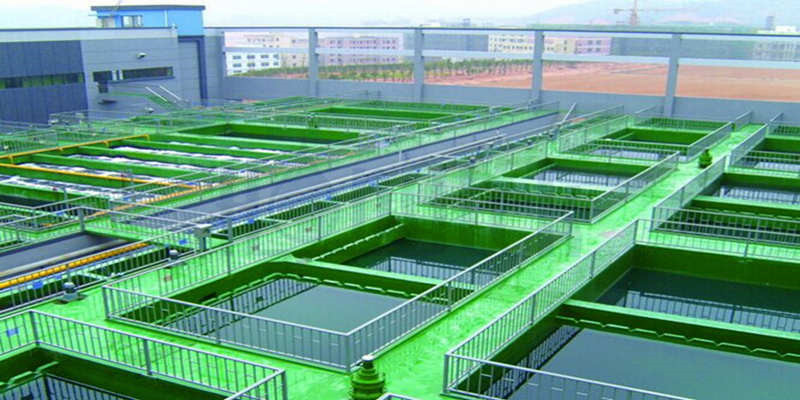
Printing and dyeing wastewater occupies a very high proportion of the total industrial wastewater discharge, and the wastewater has deep color, high concentration of organic matter and high salt content. Especially in recent years, with the increasing quality of products, most industrial dyes tend to have the characteristics of anti-photolysis, anti-oxidation, and anti-biological oxidation, which further increases the difficult of wastewater treatment. With the increasing shortage of water resources, the advanced treatment and resource reuse of printing and dyeing wastewater have attracted more and more attention.
Then how should we treat printing and dyeing wastewater? Let's take a look at the following methods:
1. Adsorption Treatment Technology
Activated carbon is the most commonly used adsorbent in the advanced treatment of printing and dyeing wastewater. It has strong adsorption and decolorization performance, and is especially suitable for the decolorizaiton of water-soluble dyes with a relative molecular mass of less than 400. However, activated carbon has a poor adsorption effect on hydrophobic dyes, and its regeneration is also complicated and expensive, which limits the application of the adsorption method in the advanced treatment of printing and dyeing wastewater.
2. Membrane Separation Technology
The membrane separation technologies used in the advanced treatment of printing and dyeing wastewater mainly include Microfiltration (MF), Ultrafiltration (UF), Nanofiltration (NF) and Reverse Osmosis (RO). MF and UF are often used as the pretreatment of NF and RO; UF can separate macromolecular organic matter, colloids, and suspended solids; NF can achieve desalination and concentration at the same time; RO can remove soluble metal salts, organic matter, colloidal particles, etc. And intercept all ions.
Hongtek provides a series of microfiltration products, such as Melt Blown Cartridges, string wound cartridges and Pleated Filter Cartridges, that are suitable for pre-filtration of printing and dyeing wastewater with high removal efficiency and simple operation.
What's more, the UFP and UFM Ultrafiltration Membrane Modules that Hongtek supply could be perfect choice to used in the recovery process of printing and dyeing wastewater. It can not only remove the residual organic matter in the water, reduce the color, but also remove inorganic salts and prevent the accumulation of inorganic salts in the system. It is a promising technology in the advanced treatment of printing and dyeing wastewater.
3. Electrochemical Oxidation Technology
Under the action of an external electric field, in a specific reactor, through a certain chemical reaction, electrochemical process or physical process, a large number of free radicals are generated, and the process of using the strong oxidizing property of free radicals to degrade pollutants in wastewater. Electrochemical technology has the characteristics of easy control, no or less pollution, and high flexibility.
For the advanced treatment of printing and dyeing wastewater, there are many single technologies and each has advantages and disadvantages, but all of them are difficult to meet the discharge and reuse standards. According to the characteristics of printing and dyeing wastewater quality, reasonable selection and optimization of combined treatment processes are required to improve the degree of wastewater treatment and achieve the ultimate goal of wastewater recycling.